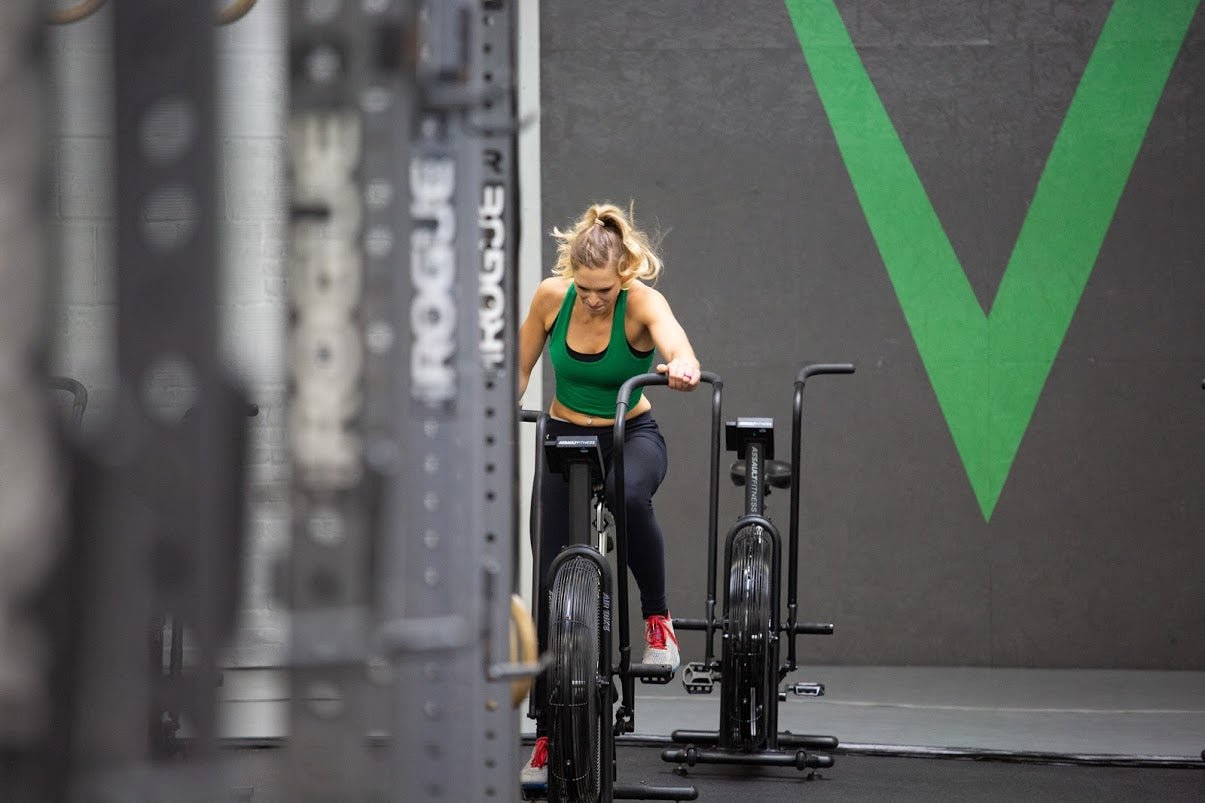
Written by Ricky Moore
We have all come out the gates hot and gone 0 to 100 real quick in a workout, and then right around the three-minute mark, look at the clock and say “Why did I do that?,” or “This is not going to end well,” or maybe even used a few other other expressions and choice words that I cannot repeat here.
Do YOU struggle with “pacing” in metcons? For workout purposes, let’s define pacing as the ability to move at a consistent and constant speed throughout your workout. Here is a strategy I use that can help with you learn a different way to pace yourself as not only a strategy for not dying in a puddle on the floor in the middle of your workout, but also to help you get more reps and rounds overall, even if you start out slower.
Pacing Pro Tips
The next time you start an AMRAP (as many rounds and reps as possible in a set time) or even in a workout that calls for a certain number of rounds for time – put your ego aside and start the workout at 65 to 70% of your output. I know it seems counterintuitive to move slower off the start than you can and want to, it will keep you in the game for the long run, not only conserving your precious energy, but also allowing you to get further into the AMRAP or clock a faster time overall – both of which increase your power output.
“But Ricky, that is way too much time to waste on moving more slowly than I am able, so many people will pass me,” you say. My response will be, “That is okay, it’s not about them, it’s about you.” And I will almost guarantee you that your time will be much faster due the fact that you will be more focused and ready to tackle each round. With your old strategy, you weren’t able to maintain that pace and slowed to a crawl. And you were probably wasting 30 to 45 seconds of rest in transition anyway. ;).
Example of How I Attacked a Recent Performance Workout
AMRAP in 10 minutes:
10 Push Press (95/65)
10 Deadlifts (95/65)
30 Double-Unders
My strategy for this workout was to keep the first three rounds around 1:15 each round and then increase my pace to about 1:00 per round to sub 1:00 as I got deeper into the workout. By throttling back in the first rounds and coming out easy instead of hot, I was able to keep my movements in rhythm, was fluid in each movement and when transitioning between movements, and with each round, I gained confidence and speed. I finished with a score of 8 + 5. There were plenty of athletes in the class who finished their first round or two before I did, but since I started with a pace I knew I was able to maintain and increased that pace throughout the workout instead of dying off a few minutes in, I was able to complete more rounds overall.
How to Determine 65-70% Effort
The answer varies from person to person. A broad answer would be, whatever you guess it to be. If that’s to broad for you, here are two methods that can help determine this level of effort.
Method #1: You should be able to recite your Social Security number (to yourself that is) or your mom’s phone number, throughout the first round or two. For instance if you perform the above AMRAP, you should say the first three digits of your SS# or mom’s phone number (XXX). Then after the Deadlifts, the next two numbers (XX). And then after the Double-Unders the last four (XXXX). You should be able to feel that your heart rate is elevated and you should be breathing pretty hard, but you should still be able to think about questions your coach is asking you and also form complete sentences to answer them.
Method #2: Another way to determine and manage percentage of effort is to determine how long it would take you to finish one round of the workout if you all-out sprinted it, and then add 30 to 45 seconds to that and perform each round at that pace. Using my example again, I determined that I could probably do one round in 45 seconds or less if all I had to do was sprint one round. That’s how I decided to start my first round at about 1:15 pace. It allowed me to get into a flow, check in with myself to see how I was feeling that day, and to decide if I had it in me to move faster in the upcoming rounds.
I’m sure we all know what 100% feels like – you don’t even hear your coach giving you cues, you get angry if someone tries talking to you, you can’t think and you certainly can’t hold a conversation or respond to questions. If you’re moving so fast that you can’t think clearly or you don’t know what day it is or what you had for breakfast, that is most likely your full output in round one and you went too fast out of the gate.
No matter which method you choose, throttle back on the first round then try to increase your pace by 5 to 10% each round and see how you do. The longer the workout, the smaller increment jumps you should make in percentage. If you find that you have a lot more in the tank when you complete the workout, you’ll know that next time you can start at a little higher percentage of effort. If you still see a “drop-off round” you either started at too high a percentage or made too large of jumps in effort each round. Either way, you’ve learned something about your engine AND you have another way to measure your progress in your conditioning!








